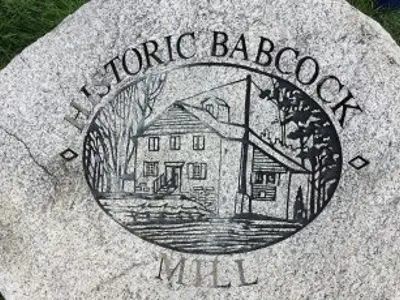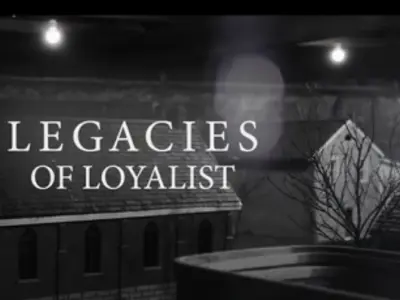You can access the Full Land Acknowledgement Statement in Council and Administration. If you would like a PDF copy sent to you, please contact our Community Development Coordinator
History and Heritage
Land Acknowledgement Statement

Loyalist Township is situated on the ancestral lands of the Haudenosaunee, Michi Saagiig, and Omámíwinini Peoples.
Land Acknowledgement Statement for Loyalist Township
Shortened alternate Land Acknowledgement Statement for Loyalist Township
Loyalist Township is situated on the ancestral lands of the Haudenosaunee, Michi Saagiig, and Omámíwinini Peoples. We acknowledge the Métis, Inuit, and other First Nations from across this vast land. Loyalist Township commits to new partnerships in the Spirit of the Two-Row Wampum and Dish with One Spoon.
What to see and do in Loyalist
Historical highlights
- Loyalist Township is home to First Nations peoples including the Haudenosaunee, Michi Saagiig, and Omámíwinini Peoples.
- Funded by local subscription, the Bath (Ernestown) Academy was one of the first schools in Upper Canada. The Academy was originally built in 1811 and rebuilt twice after being destroyed by fire. The current building dates from 1910 and has a heritage designation. The school has had a colourful history and served the public as a school, military barracks, township offices and library.
- During the War of 1812, Bath saw some of the conflict very close indeed with the escape of HMS Royal George, the largest British warship on Lake Ontario, from a determined American fleet chasing her through the channel to Kingston's inner harbour. The "Flight of the Royal George" culminated in the only American attack on Kingston during the war. It ended with a naval battle at Kingston between the American and British ships, supported by the shore batteries at Point Henry. This was the only time shots were fired from Point Henry in its history. At the same time, the merchant schooner Two Brothers, belonging to the Fairfield brothers, was destroyed by fire in Bath's harbour.
- September 7, 1816 was a significant moment in the history of the Great Lakes navigation when the steamship "Frontenac" was launched at Finkle's Park. It was the first steamship built for service on Lake Ontario!
- Legend has it that in 1823, Amherst Island was lost in a game of cards in Ireland by Catherine Bowes, daughter of Sir John Johnson, to the 3rd Earl of Mount Cashel. Consequently, much of Amherst Island continued to be farmed by Irish tenant farmers well into the 20th century.
- Pragmatically named after the many mills on the Millhaven Creek, the village of Millcreek was renamed to Odessa in 1856 by its postmaster to commemorate the 1854 British siege of the Black Sea port at Odessa in the Ukraine during the Crimean War.
- On August 20, 1945, the robbery at gunpoint of the Royal Bank of Canada in Bath catapulted the lakeside village into national consciousness and into the annals of criminal history. The amount stolen amounts to over $5 million in today's dollars - then the biggest bank robbery in Canadian history.
- Unveiled in 1920, Wilton is home to the only Great War memorial in Loyalist Township. The Lions Club of Odessa and District, along with members of the Canadian Forces School of Communications and Electronics, honour the site and the fallen dead every year with a Remembrance Day Service at the Cenotaph. "Lest we forget".
- The dry stone walls of Amherst Island, among the most tangible remnants of early Irish settlement, are considered one of the most significant concentrations of historic dry stone walls anywhere in Canada and have a heritage designation. The island hosts a regular international Dry Stone Festival where many creative new walls have appeared!
- In September 1984, Her Majesty Queen Elizabeth II and HRH The Duke of Edinburgh visited Amherstview to dedicate the opening of the Loyalist Parkway and the memorial "gates" marking the Parkway before becoming the first visitors to tour Fairfield House, built by Loyalists in 1793.
- On January 1, 1998, the Townships of Ernestown and Amherst Island amalgamated with the Village of Bath to form one municipality called Loyalist Township.
Contact Us
Loyalist Township
Box 70, 263 Main Street
Odessa, Ontario K0H 2H0
Tel: 613-386-7351
info@loyalist.ca
Heritage, Culture & Tourism Division
Loyalist Township
341 Main Street, Bath
Ontario, Canada K0H 1G0
Tel: 613-386-7351
explore@loyalist.ca
Sign up to our Newsletter
Stay up to date on the Township's activities, events, programs and operations by subscribing to our eNewsletters.






